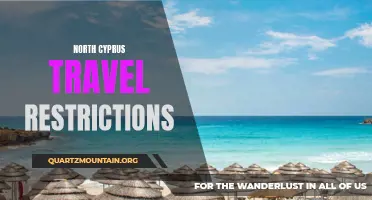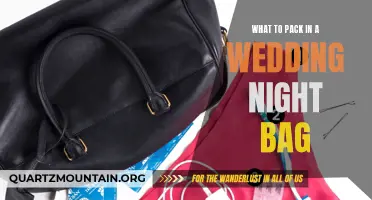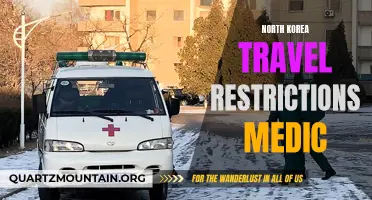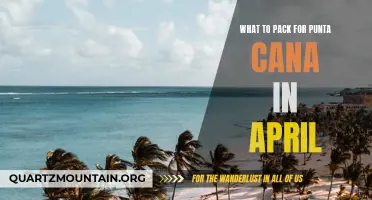
Are you planning a trip to Quilotoa, Ecuador? This beautiful destination is home to the stunning Quilotoa crater lake, which is a must-visit for any nature lover. But before you embark on your journey, it's important to pack the right essential items to ensure a comfortable and enjoyable trip. In this article, we will discuss the essential items you should pack for a trip to Quilotoa, so that you can make the most out of your adventure in this breathtaking natural wonder.
| Characteristics | Values |
|---|---|
| Weather | Moderate to cool temperatures, can be windy and rainy |
| Clothing | Layered clothing, including sweaters, jackets, and raincoats |
| Footwear | Comfortable walking shoes or hiking boots |
| Accessories | Hat, gloves, and scarf for extra warmth |
| Backpack | Daypack for carrying essentials and water |
| Water | Carry at least 2 liters of water per person |
| Snacks | Pack energy bars or trail mix for quick and easy snacks |
| Sunscreen | Protect your skin from the sun's rays at high altitude |
| Medications | Bring any necessary medications, including altitude sickness medication |
| First aid kit | Basic first aid supplies, including band-aids, antiseptic, and pain relievers |
| Map and compass | Helpful for navigation on the trail and around the Quilotoa Loop |
| Cash | Bring cash as there may not be many ATMs in the area |
| Camera or phone | Capture the stunning views and memories |
| Travel Insurance | Consider getting travel insurance for any unforeseen circumstances |
What You'll Learn
- What clothing should I pack for a trip to Quilotoa?
- Are there any specific items I should pack for hiking at Quilotoa?
- Do I need to bring my own camping gear for a stay at Quilotoa?
- Is there anything specific I should pack for high altitude conditions at Quilotoa?
- Are there any specific items I should pack for visiting the Quilotoa Lagoon?

What clothing should I pack for a trip to Quilotoa?
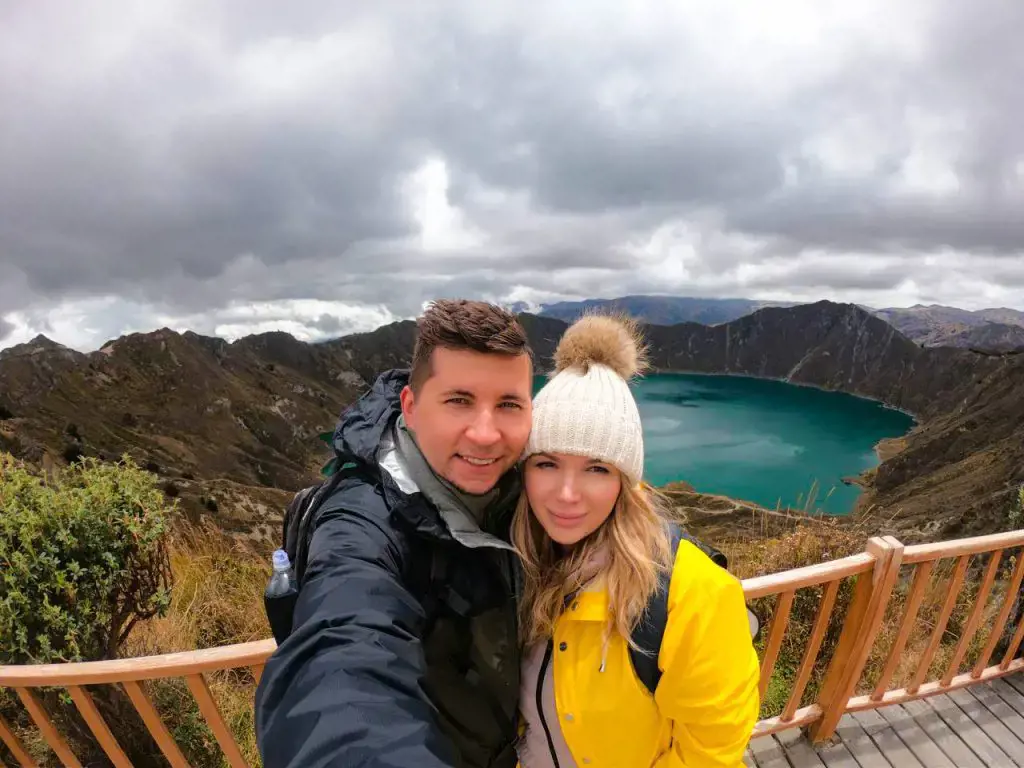
If you are planning a trip to Quilotoa, a stunning crater lake located in Ecuador, it is important to pack the appropriate clothing to ensure a comfortable and enjoyable experience. Quilotoa is located at an altitude of approximately 3,900 meters, which means the weather can be quite unpredictable and temperatures can vary significantly throughout the day. Here are some tips on what clothing to pack for your trip:
- Layering is key: Due to the fluctuating temperatures, it is advisable to pack clothing that can be easily layered. This way, you can add or remove layers depending on the weather conditions. Start with a lightweight base layer made of moisture-wicking material to keep you dry and comfortable. You can then add a mid-layer made of fleece or wool for insulation. Finally, top it off with a waterproof and windproof outer layer to protect you from rain and strong winds.
- Warm clothing: Quilotoa can get quite chilly, especially in the early mornings and evenings. It is important to pack warm clothing such as long-sleeve shirts, sweaters, and thick socks. A warm hat, gloves, and a scarf are also essential to keep your extremities warm. It is always better to have extra layers than to be cold and uncomfortable during your trip.
- Hiking gear: If you plan on hiking around the crater or exploring the surrounding areas, it is important to have the appropriate footwear. Pack a sturdy pair of hiking boots or shoes that offer good traction and ankle support. Make sure to break them in before your trip to avoid any discomfort or blisters. Additionally, pack lightweight and breathable hiking pants or leggings and moisture-wicking socks to keep your feet dry and prevent blisters.
- Sun protection: At high altitudes, the sun's rays can be quite intense. It is important to pack a wide-brimmed hat or a cap to protect your face and neck from the sun. Don't forget to bring sunscreen with a high SPF and apply it generously throughout the day. Sunglasses are also essential to protect your eyes from the bright sunlight reflecting off the water.
- Rain gear: Quilotoa is located in a region known for its frequent rain showers. It is advisable to pack a lightweight and waterproof rain jacket or poncho to protect yourself from sudden downpours. Additionally, pack a small umbrella or a waterproof cover for your backpack to keep your belongings dry.
- Comfortable clothing: When you are not hiking or exploring, it is important to have comfortable clothing that allows for free movement. Pack comfortable pants or shorts and breathable t-shirts or blouses. It is also advisable to pack a swimsuit if you want to take a dip in the lake or relax at any nearby hot springs.
- Accessories: Don't forget to pack a reusable water bottle to stay hydrated throughout your trip. It is also helpful to have a small daypack for carrying your essentials while exploring. A headlamp or a flashlight can come in handy, especially if you plan on hiking during the early morning or late evening.
Remember to check the weather forecast for Quilotoa before your trip and pack accordingly. It is always better to be prepared for any weather conditions. By packing the appropriate clothing, you can ensure a comfortable and enjoyable trip to Quilotoa.
Essential Items to Pack for an Unforgettable Carnival Cruise Experience
You may want to see also

Are there any specific items I should pack for hiking at Quilotoa?
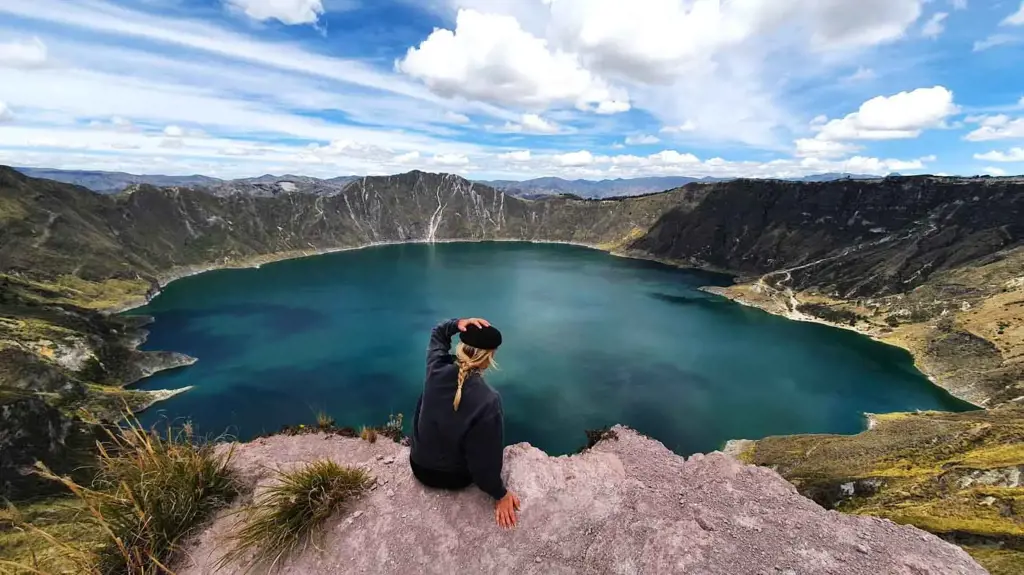
Quilotoa, located in Ecuador, is a popular destination for hiking enthusiasts due to its stunning crater lake and scenic trails. If you're planning a hiking trip to Quilotoa, it's important to pack the right gear and essentials to ensure a safe and enjoyable experience. Here are some specific items that you should consider packing for your hike:
- Hiking Boots: A sturdy pair of hiking boots is essential for navigating the rocky and uneven terrain at Quilotoa. Make sure to choose a pair that provides ankle support and has a good grip on the sole for traction.
- Layered Clothing: The weather at Quilotoa can be unpredictable, so it's important to pack layered clothing to prepare for different conditions. Start with a moisture-wicking base layer, add a warm mid-layer, and top it off with a waterproof and windproof outer layer.
- Hat and Sunglasses: The high altitude at Quilotoa means there is a higher risk of sunburn and eye damage from UV rays. A wide-brimmed hat and sunglasses with UV protection are essential to protect yourself from the sun.
- Sunscreen and Lip Balm: In addition to wearing protective clothing, it's vital to apply sunscreen with a high SPF to exposed areas of your skin, including your face, neck, and hands. Don't forget to pack a lip balm with SPF to prevent your lips from getting chapped and sunburned.
- Daypack: A lightweight and comfortable daypack is essential for carrying your essentials during the hike. Look for a pack with padded shoulder straps, a hip belt for weight distribution, and multiple compartments for organizing your gear.
- Water and Snacks: Staying hydrated and fueled during your hike is crucial. Pack plenty of water in a reusable bottle or hydration bladder, and bring along snacks such as energy bars, nuts, and dried fruits to keep your energy levels up.
- First Aid Kit: Accidents can happen while hiking, so it's important to carry a basic first aid kit with band-aids, antiseptic wipes, adhesive tape, and pain-relief medication. Familiarize yourself with basic first aid procedures before your trip.
- Map and Compass: While there are marked trails at Quilotoa, it's still a good idea to carry a map and compass as a backup. This will help you stay on track and navigate in case you encounter any unexpected detours or get lost.
- Camera and Binoculars: Quilotoa offers breathtaking views and unique wildlife spotting opportunities. Don't forget to pack a camera or smartphone to capture the memories and binoculars to get a closer look at the flora and fauna.
- Cash and Identification: Although Quilotoa is a relatively remote location, it's always a good idea to carry some cash and a form of identification. This will come in handy if you need to purchase supplies or in case of emergencies.
Remember, these are just the essential items to pack for your hiking trip to Quilotoa. Depending on the duration of your hike and your personal preferences, you may need to pack additional items such as a tent, sleeping bag, cooking equipment, or trekking poles. It's always a good idea to research and plan ahead to ensure you have everything you need for a successful and enjoyable hiking adventure at Quilotoa.
What to Pack for a November Trip to Bermuda
You may want to see also

Do I need to bring my own camping gear for a stay at Quilotoa?
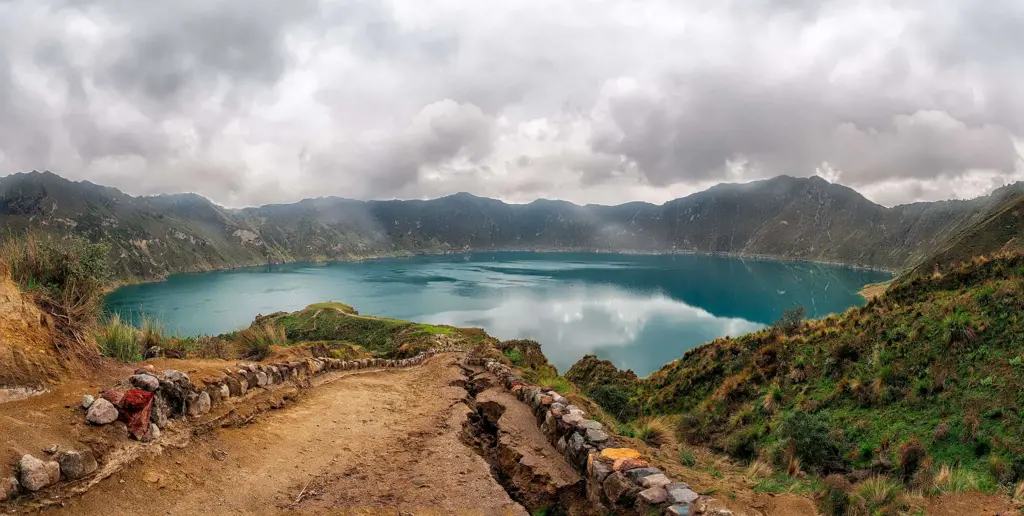
When planning a trip to Quilotoa, a stunning volcanic crater lake located in Ecuador, many travelers often wonder whether they need to bring their own camping gear. The answer to this question can vary depending on a few factors, such as your preferred accommodation type and the type of trip you are planning.
If you are thinking about staying overnight in Quilotoa, there are a few options in terms of accommodation. The popular choice is to stay at a hostel or guesthouse in one of the nearby villages, such as Quilotoa or Chugchilán. These accommodations typically provide basic amenities, including bedding and bathroom facilities, so you would not need to bring your own camping gear in this case.
However, if you are looking for a more rustic and immersive experience, you may consider camping directly at the Quilotoa crater. It is important to note that camping within the crater is only permitted in designated areas and requires a permit. In this case, you would indeed need to bring your own camping gear, including a tent, sleeping bag, and any other necessary camping equipment.
Before embarking on a camping trip to Quilotoa, it is essential to make sure you are well-prepared. Here is a step-by-step guide to help you plan your camping adventure:
- Research the designated camping areas: Check with the local authorities or tour operators to find out where camping is allowed within the Quilotoa crater. They can provide you with specific information on the location, facilities, and any regulations you need to adhere to.
- Pack your camping gear: Make sure to pack all the necessary camping equipment, including a tent, sleeping bag, sleeping pad, cooking utensils, and any other essentials you might need. It is also crucial to bring appropriate clothing, as weather conditions at high altitudes can be unpredictable.
- Obtain a camping permit: As mentioned earlier, camping within the Quilotoa crater requires a permit. Contact the relevant authorities or your tour operator to obtain the necessary permits before your trip. This will ensure that you are in compliance with local regulations and will help preserve the natural beauty of the area.
- Practice Leave No Trace principles: When camping at Quilotoa, it is crucial to follow the principles of Leave No Trace. This means leaving the area as you found it, minimizing your impact on the environment, and disposing of waste properly. Respect the natural surroundings and wildlife by staying on designated trails and refraining from disturbing the ecosystem.
- Be prepared for the high altitude: Quilotoa is situated at an altitude of around 3,914 meters (12,841 feet), so it is essential to acclimate properly before embarking on a camping trip. Take your time to adjust to the altitude and listen to your body. Stay hydrated and be aware of any symptoms of altitude sickness.
Overall, whether you need to bring your own camping gear for a stay at Quilotoa depends on your preferred accommodation and the type of experience you are seeking. If you choose to stay at a hostel or guesthouse, camping gear is typically not required. However, if you opt for a more adventurous camping experience within the Quilotoa crater, bringing your own gear is essential. Proper planning, research, and adherence to local regulations will ensure a memorable and responsible camping trip to Quilotoa.
Essential Items to Pack for a Greek Island Cruise
You may want to see also

Is there anything specific I should pack for high altitude conditions at Quilotoa?
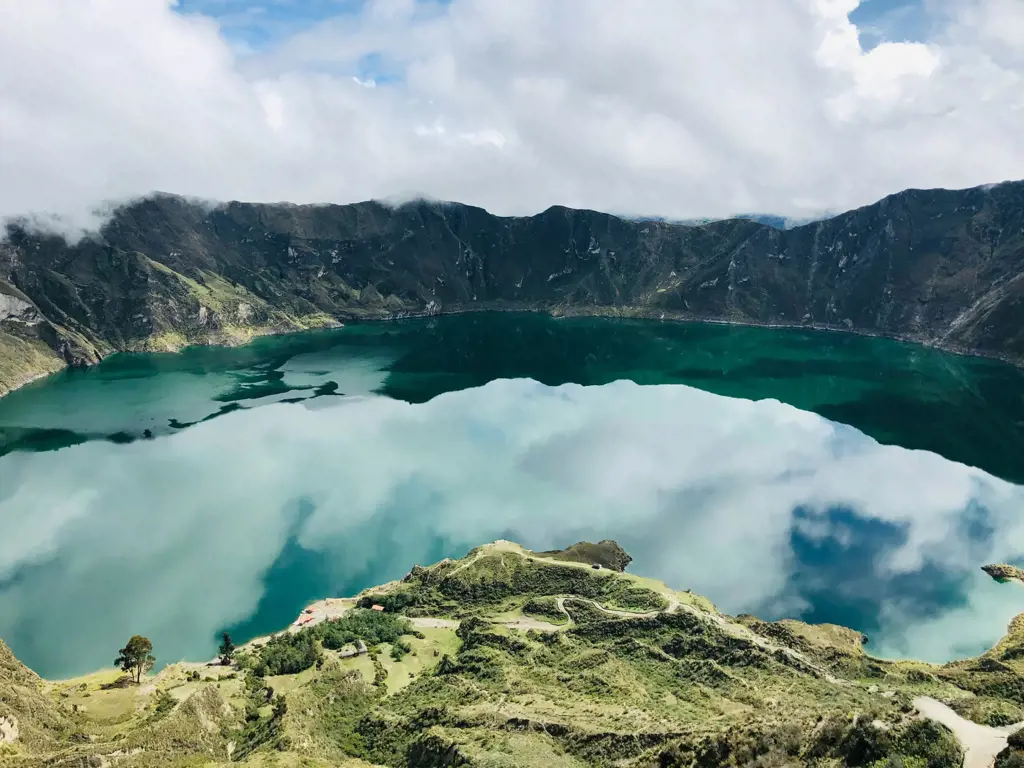
If you're planning a trip to Quilotoa, Ecuador, you'll be visiting high altitudes. This beautiful crater lake sits at an elevation of around 12,800 feet (3,900 meters), and the surrounding area is known for its stunning landscapes and unique wildlife. However, before you embark on your journey, it's important to be prepared for the high altitude conditions you'll encounter. Here are some things you should pack to ensure a comfortable and enjoyable trip:
- Layered Clothing: One of the most important things you can do when traveling to high altitude areas is to dress in layers. The temperature can vary greatly throughout the day, with warm sunny days quickly turning into chilly nights. Start with a breathable base layer, add a few insulating mid-layers, and top it off with a waterproof and windproof outer layer. This will allow you to adjust your clothing to the changing conditions and keep you comfortable throughout your trip.
- Sun Protection: At high altitudes, the sun is stronger and more intense. Make sure to pack a wide-brimmed hat, sunglasses, and a high SPF sunscreen to protect your skin from harmful UV rays. Additionally, consider packing a lip balm with SPF, as the dry air can cause chapped lips.
- Hydration: Staying hydrated is crucial when traveling to high altitudes. The air at higher elevations is drier, which can lead to increased water loss through respiration and increased urine output. Pack a reusable water bottle and aim to drink at least 2-3 liters of water per day to prevent dehydration.
- Medications: If you have any pre-existing medical conditions, it's a good idea to consult with your doctor before traveling to high altitudes. They may prescribe medications such as acetazolamide to help prevent or alleviate symptoms of altitude sickness. It's important to pack any necessary medications and keep them easily accessible during your trip.
- Snacks: At high altitudes, your metabolism may increase, and you may find yourself feeling hungry more frequently. Pack some high-energy snacks such as nuts, granola bars, or dried fruits to keep your energy levels up throughout the day.
- First-aid Kit: It's always a good idea to pack a basic first-aid kit when traveling to remote or high altitude areas. Include essentials such as band-aids, antiseptic cream, painkillers, and any personal medications. Additionally, consider packing items like altitude sickness medication, anti-diarrheal medication, and anti-inflammatory medication.
- Acclimatization time: When traveling to high altitudes, it's important to give your body time to acclimatize. This means taking it easy for the first few days and gradually increasing your activity level. Plan your itinerary accordingly and allow for rest days as needed.
In conclusion, packing for high altitude conditions at Quilotoa requires careful consideration of the unique challenges you may face. By preparing for the changing weather, protecting yourself from the sun, staying hydrated, and taking necessary medications, you'll be well-equipped to enjoy the breathtaking beauty of Quilotoa. Don't forget to take it easy and give yourself time to adjust to the altitude. Safe travels!
Essential Packing Guide for a Cruise and Week in Italy
You may want to see also

Are there any specific items I should pack for visiting the Quilotoa Lagoon?

Visiting the Quilotoa Lagoon in Ecuador is a unique and breathtaking experience. This stunning volcanic crater lake is a popular attraction for tourists and hikers alike. Whether you plan on hiking around the rim of the crater or taking a boat ride on the emerald-green waters, it is important to pack the right items to ensure a comfortable and enjoyable visit.
Here are some specific items you should consider packing for your trip to the Quilotoa Lagoon:
- Comfortable and sturdy hiking shoes: The hike to the Quilotoa Lagoon involves walking on uneven terrain and steep slopes. It is crucial to have a pair of comfortable and sturdy hiking shoes that provide good ankle support. This will help prevent any injuries and ensure a safer hiking experience.
- Layers of clothing: The weather conditions at the Quilotoa Lagoon can be quite unpredictable. It is important to pack layers of clothing, including a waterproof jacket, as the weather can change suddenly. In addition, packing a hat and sunglasses can help protect you from the sun during the day.
- Snacks and water: The hike to the Quilotoa Lagoon can be quite demanding, so it is essential to stay hydrated and energized. Pack plenty of water and some lightweight snacks such as energy bars or trail mix to keep you fueled throughout the hike.
- Sunscreen and insect repellent: Being in high altitude and exposed to the sun for an extended period can increase the risk of sunburn. It is recommended to apply sunscreen with a high SPF to protect your skin. Additionally, insect repellent can help keep mosquitoes and other bugs at bay.
- Camera or smartphone: The Quilotoa Lagoon offers stunning panoramic views and picturesque landscapes. Don't forget to pack your camera or smartphone to capture these unforgettable moments. Make sure to bring extra batteries or a power bank as well, as there are limited charging options available.
- Cash and small bills: The Quilotoa Lagoon is a remote location, and there may not be many ATMs or places that accept credit cards. It is advisable to carry cash in the local currency and have small bills for purchases such as food, drinks, or souvenirs.
- First aid kit: While accidents are rare, it is always better to be prepared. Packing a basic first aid kit with essentials such as band-aids, pain relievers, and antiseptic can come in handy for minor injuries or ailments.
Remember to pack your items in a comfortable backpack that distributes the weight evenly. Keep in mind that the altitude at the Quilotoa Lagoon is over 12,000 feet, so it is important to acclimate yourself properly by taking it slow and staying hydrated.
In conclusion, visiting the Quilotoa Lagoon is an amazing experience, but it is crucial to pack the right items to ensure a safe and comfortable visit. From comfortable hiking shoes to layers of clothing, sunscreen to snacks, these items will help you make the most of your trip and enjoy the stunning beauty of the Quilotoa Lagoon.
Essential Items to Pack for a September Trip to Europe
You may want to see also
Frequently asked questions
When packing for a trip to Quilotoa, it's important to remember the essentials such as sturdy walking shoes or hiking boots, warm clothing like jackets and sweaters, and a hat and gloves for the colder temperatures. It's also a good idea to pack sunscreen and insect repellent, as there may be bugs present in the area. Lastly, don't forget to bring a daypack to carry your essentials while exploring the Quilotoa Loop.
If you plan on hiking around the Quilotoa Loop, it's recommended to pack a quality rain jacket or poncho, as the weather in the area can be unpredictable. You'll also want to bring a refillable water bottle to stay hydrated throughout your hike. It's a good idea to pack some snacks like energy bars and trail mix as well, in case you need a quick pick-me-up along the way.
Quilotoa experiences varying temperatures throughout the day, so it's important to pack layers that can be easily added or removed as needed. You'll want to bring a mix of short-sleeve and long-sleeve shirts, comfortable pants or leggings, and a warm sweater or jacket for the colder evenings. It's also a good idea to pack a hat and sunglasses to protect yourself from the sun, as well as a good pair of socks and sturdy shoes for walking and hiking.
When visiting the Quilotoa Crater Lake, it's important to come prepared. Be sure to pack a sturdy pair of walking shoes, as the terrain can be uneven and rocky. You may also want to pack a swimsuit and towel if you plan on taking a dip in the lake, although be aware that the water can be quite cold. Additionally, it's a good idea to bring a camera or smartphone to capture the stunning views of the crater lake.


